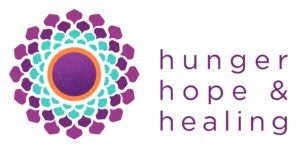It was a certain kind of shock. A definite re-calibration occurred. Repeatedly. And, sometimes it…

Instead of Good Food versus Bad Food, Try First Do Less Harm, Then Do More Good
In our latest Hunger, Hope + Healing newsletter, I introduced a new offering for us at our Portland home, the DAYA Foundation. That offering is the Restart Program led lovingly by Courtney Cronk.
In response to this newsletter, I was honored by an email expressing a valuable perspective. One concern was that Restart might activate the parts of us that think of Good Foods and Bad Foods, keeping some foods in the “scary’ category.
Please know, that I completely understand living with the view that there are Good Foods and Bad Foods and that we are Good or Bad People when we don’t or do eat these foods.
During my own disordered eating days (years), there was little to no direction available. This was back in the late 80s and early 90s. I floundered with self-generated ideas about what to eat and what not to eat, mostly based on fear of food, fear of gaining weight, a desire to lose weight, and anger about having to eat, wanting to eat, and deserving to eat (funny how those aren’t the same things – those are all distinctly able to express themselves, and, at times, in conflict with each other too!).
Somehow, I came to a ‘decision’ that I was willing to explore. I would eat three meals a day, even if I had also binged. And, for a time, I would avoid eating the foods with which I seemed to be bingeing the most. Those happened to be sugar and carbs (since I was starving myself much of the time, this makes sense). I had a deep desire to have a relationship to all foods as valid, and to have no foods be off limits. It just didn’t make sense to me that my mind would label any foods as evil, forever, and only for me (since I regularly saw other people eating those sorts of foods and not falling to pieces).
But it also seemed consistent enough that when I ate such foods, I was overwhelmed, not just mentally, but also physiologically.
So, I decided to avoid the following things, specifically: the art openings at my art school (I was in college at the time and these openings were always buffets of sweets and wine and cheese, the latter of which had no appeal to me, the former of which was terrifying). The walk home from art school to my apartment led me by three different ice cream shops, two cookie shops, one bakery, and the cookie aisle at the grocery store.
Over a period of 5-6 weeks, while researching how it would be to actually eat three meals a day (my hope was to become someone I could rely on to feed myself, someone trustworthy to myself) and not putting myself in danger (which is how it felt at the time), that I might find some inner sanity. Which is actually what happened. My brain started to feel better. I slept better. I was less anxious about where my next calories would be coming from and whether I would fall into a pit of despair because I was walking too closely to a cookie shop (or a cookie at all!).
A chapter in my book, in the section on Forgiveness and Freedom, comes out of the changes required in my thinking. It’s called First Do Less Harm, Then Do More Good.
For the past 15 years, my recommendation to the HHH community is to grow into a recovery where we’re not labeling foods as good or bad, and into a relationship with food and feeding ourselves that respects our body and our brain (which for example, needs healthy fats to help with cell metabolism and to balance blood sugar). We often start the process of self-nurturing discipline (the stage of recovery yoga calls Tapas) with the gentle task of hydrating (gentle, but not necessarily easy or uncomplicated). Once relationships feel safer (including relationship with me, with each other, with our bodies, with certain foods) then we start nudging ourselves to consider small, wise nutritional action items with the guidance of a sensitive, skillful, encouraging nutritional therapist.
This is where my colleague, Courtney Cronk, comes in.
While there is a list of “Yes” and “No” foods during the program, food is not talked about in terms of good or bad (except for dangerous foods like hydrogenated oils). Participants decide what is best for their bodies and make choices about whether or not to keep dairy, legumes, nightshades, and grains on the menu during their detox period. Each of the five classes ends with a “word of the week” for participants to think about. These include: Kindness, notice, practice, accept, and navigate. The mantra of each class is: “Whatever I eat, I choose it consciously, I enjoy it thoroughly, and then I let it go.” The goal is to separate guilt from eating.
The RESTART Program is not designed around eating disorders, which can be helpful – normalizing getting healthy. It’s based on a nutrient dense, whole foods model, where a balance of complex carbs, proteins, and healthy fats are eaten throughout the day. There is absolutely no counting of calories, weighing or measuring food (or participants), counting points, etc. It’s a real food program – one that is healthy and sustainable.
As each of us navigate our own journey from disordered eating to more healthy relationships with food, our bodies and our minds we must use all the tools available to us to ensure our recovery. I hope that my First Do Less Harm, Then Do More Good approach can help and I believe working with a nutritionist in a thoughtful food program is another good tool to use along your journey.



